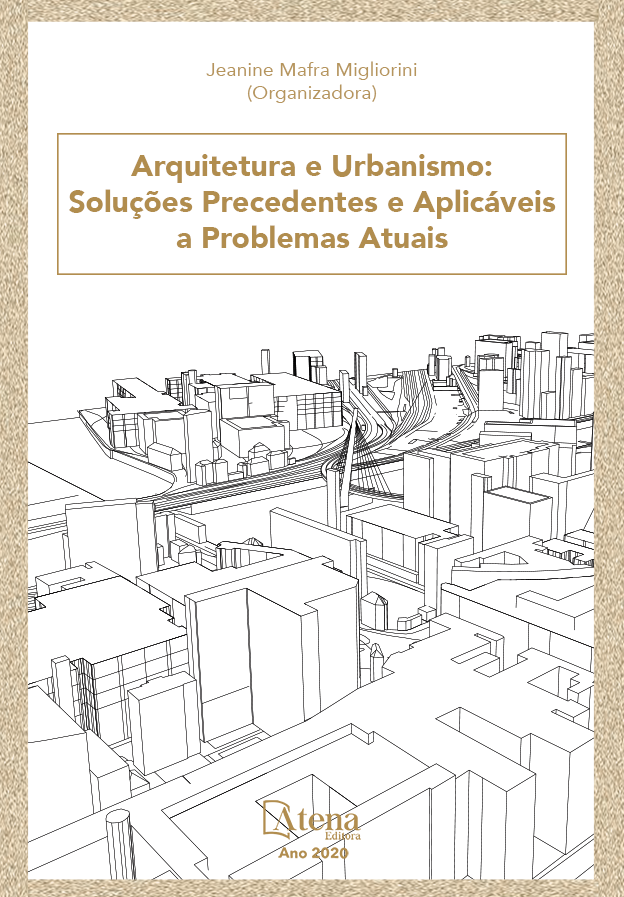
ASPECTOS CONCEITUAIS DA INTERVENÇÃO URBANA EM CENTROS HISTÓRICOS BRASILEIROS
O núcleo gravitacional das cidades, ou seja, seus centros históricos carregam um simbolismo muito forte. São funções principais/oficiais que há milênios são dispostas nas partes mais centrais das cidades trazendo em si história, narrativas e vidas. Atualmente, mudanças aceleradas nos campos sociais, políticos e econômicos clamam pela necessidade de mudanças espaciais. Como essas mudanças estão sendo realizadas nos centros históricos brasileiros? Quais as soluções empregadas pelo Programa Monumenta e outros planos governamentais na intervenção desses espaços? Quais são os resultados das intervenções? Essas transformações no espaço, a partir de intervenções urbanas, muitas vezes comprometem características particulares locais, indicadoras do Patrimônio e da Identidade Cultural dos centros históricos brasileiros. Em vista disso, busca-se refletir sobre a atuação do Programa Monumenta (Programa de Preservação do Patrimônio Histórico Urbano) e de outros planos governamentais em quatro cidades históricas brasileiras: Ouro Preto (MG), Salvador (BA), São Francisco do Sul (SC) e Porto Alegre (RS). Essa análise ressalta a necessidade de uma reformulação e reconfiguração dos referenciais teóricos que olhem para a realidade brasileira e suas particularidades, sem perder de vista a preservação simbólica e identitária dessas áreas. Questiona-se, assim, os papéis exercidos nas intervenções das cidades supracitadas e de que maneira a população local teve participação efetiva nas soluções adotadas. Paralelamente a revisão do referencial teórico adotado e do breve histórico das cidades analisadas, são apresentados quadros comparativos retratando as intenções e resultados dessas intervenções. Procura-se, com esta metodologia, resultar no exercício de reflexão das práticas de intervenção nos centros históricos brasileiros com apoio da fundamentação conceitual relacionada aos novos paradigmas.
ASPECTOS CONCEITUAIS DA INTERVENÇÃO URBANA EM CENTROS HISTÓRICOS BRASILEIROS
-
DOI: 10.22533/at.ed.0342003121
-
Palavras-chave: centros históricos brasileiros; intervenções urbanas; patrimônio histórico.
-
Keywords: Brazilian historical centers; Urban interventions; Historical patrimony.
-
Abstract:
The gravitational nucleus of cities, that is, their historical centers carry a very strong symbolism. They are main / official functions that for millennia have been arranged in the most central parts of cities bringing history, narratives and lives. Today, rapid changes in the social, political and economic fields call for the need for spatial change. How are these changes being made in Brazilian historical centers? What are the solutions employed by the Monumenta Program and other government plans to intervene in these spaces? What are the results of interventions? These transformations in space, based on urban interventions, often compromise particular local characteristics, indicating the heritage and cultural identity of Brazilian historical centers. In view of this, we seek to reflect on the work of the Monumenta Program (Urban Historical Heritage Preservation Program) and other governmental plans in four Brazilian historical cities: Ouro Preto (MG), Salvador (BA), Sao Francisco do Sul (SC) and Porto Alegre (RS). This analysis highlights the need for a reformulation and reconfiguration of the theoretical references that look at the Brazilian reality and its particularities, without losing sight of the symbolic and identity preservation of these areas. It thus questions the roles played in the interventions of the mentioned cities and how the local population had an effective participation in the adopted solutions. In parallel to the revision of the adopted theoretical framework, and a brief historical research of the cities analyzed, comparative tables will be presented depicting the intentions and results of these interventions. The aim of this methodology is to result in the exercise of reflection on intervention practices in Brazilian historical centers with the support of the conceptual foundation related to new paradigms.
-
Número de páginas: 18
- Vânia Maria Faria Floriano de Carvalho
- Sofia Maria Neves Vandenberghe


